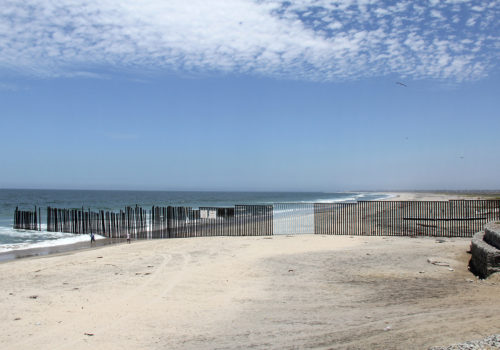Biscayne Bay glistened as I travelled across MacArthur Causeway to visit Untitled in Miami Beach. Two rowers cut through the water, gliding in the opposite direction. It’s these crisp, sunny December days that lure in northerners seeking a respite from the cold.
After entering the tent and bumping into a friend, Nuria Richardson (founder of Clandestina), the conversation around history and borders continued to echo through the work of three artists presented at the booth of Catharine Clark Gallery in San Francisco.
Anton Stubner, the Director, provided valuable insight into these photographic works.
















